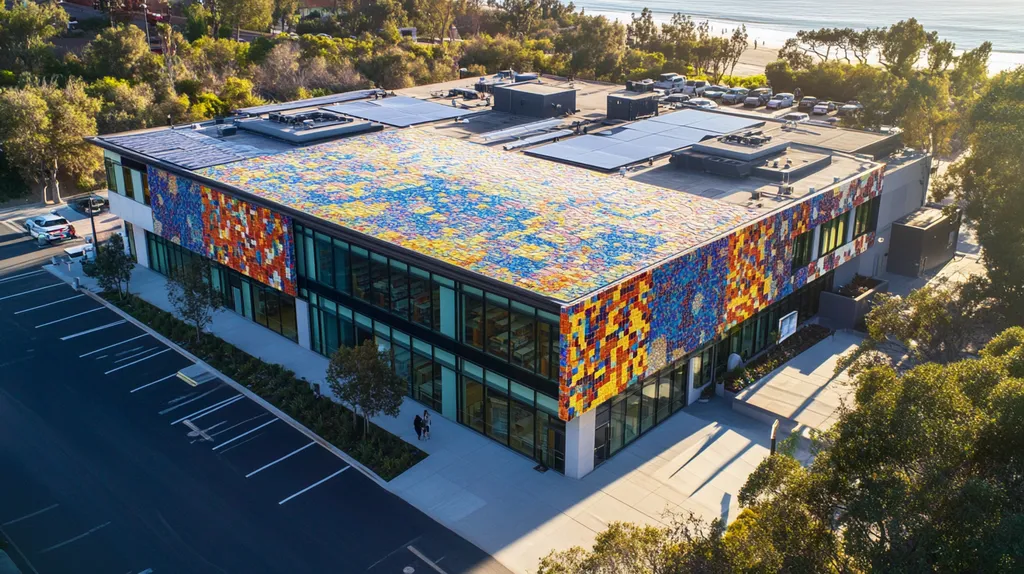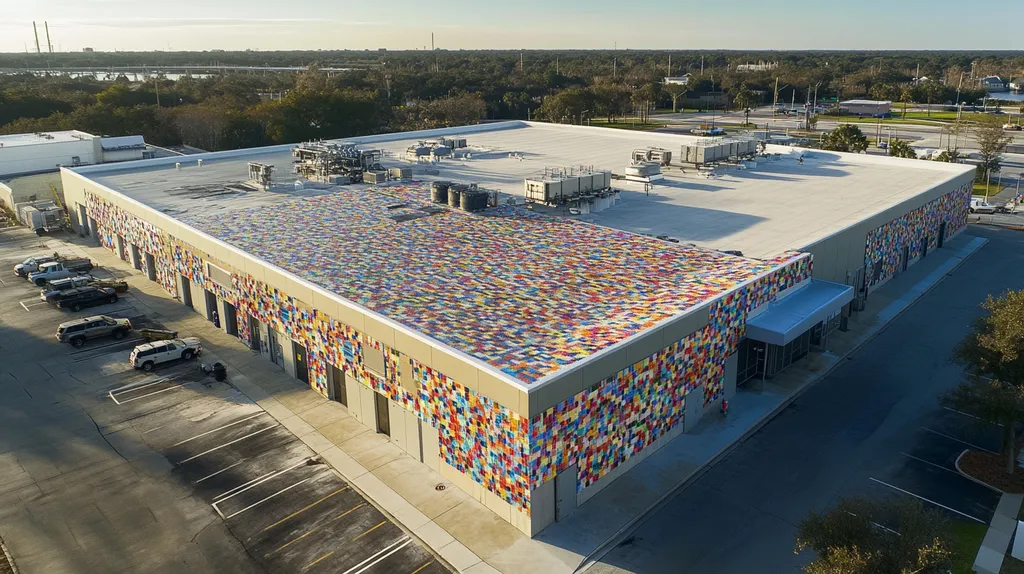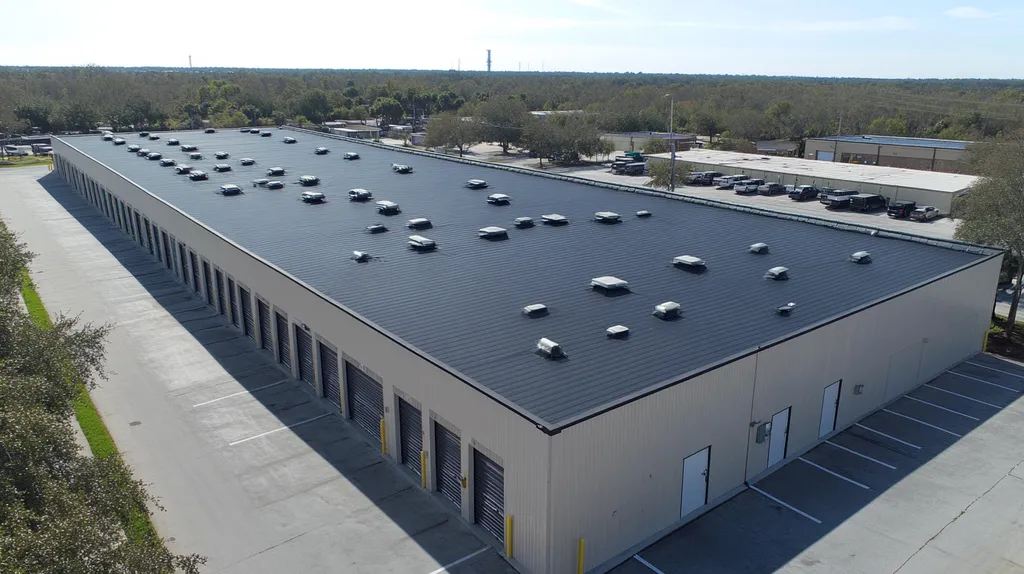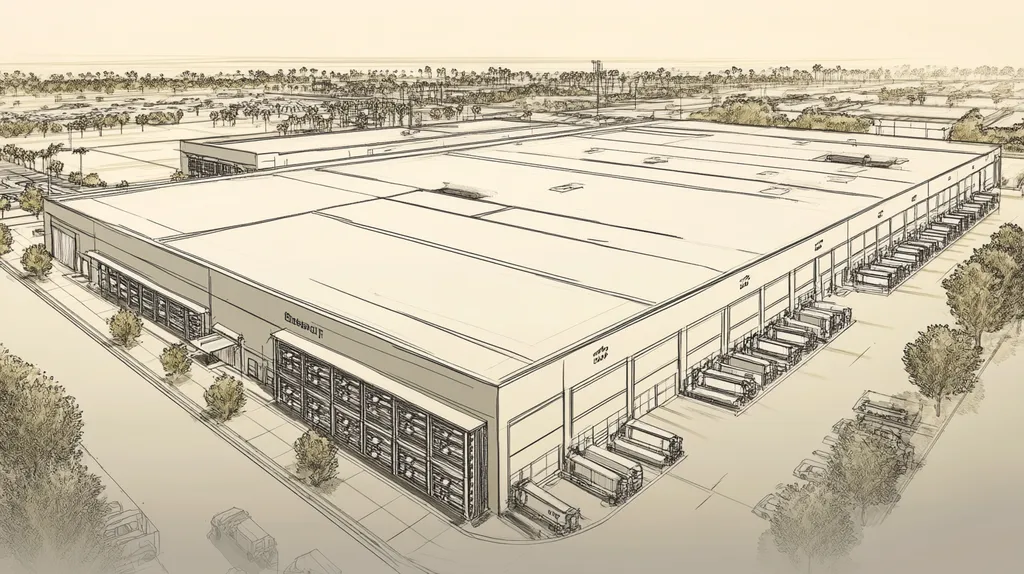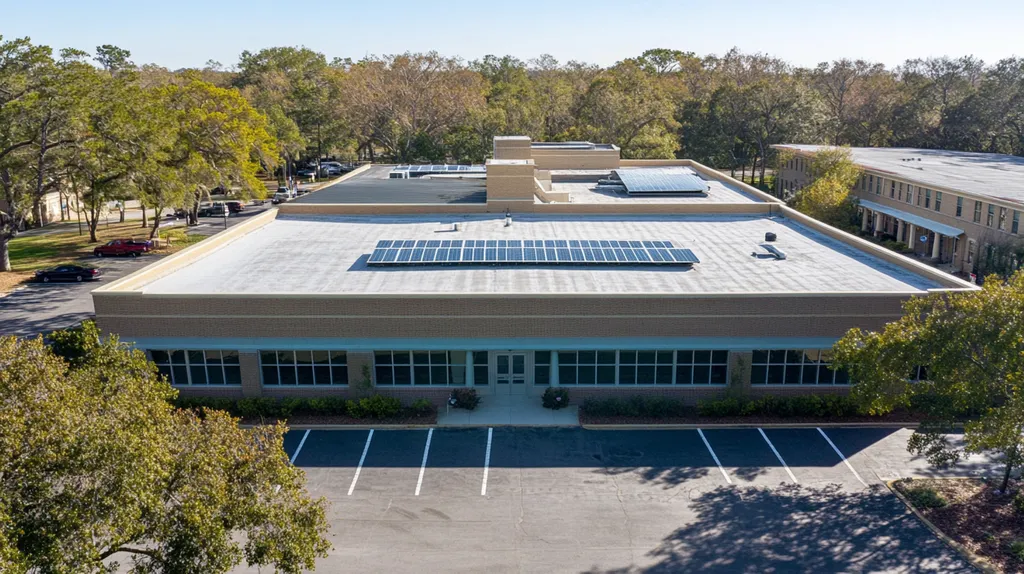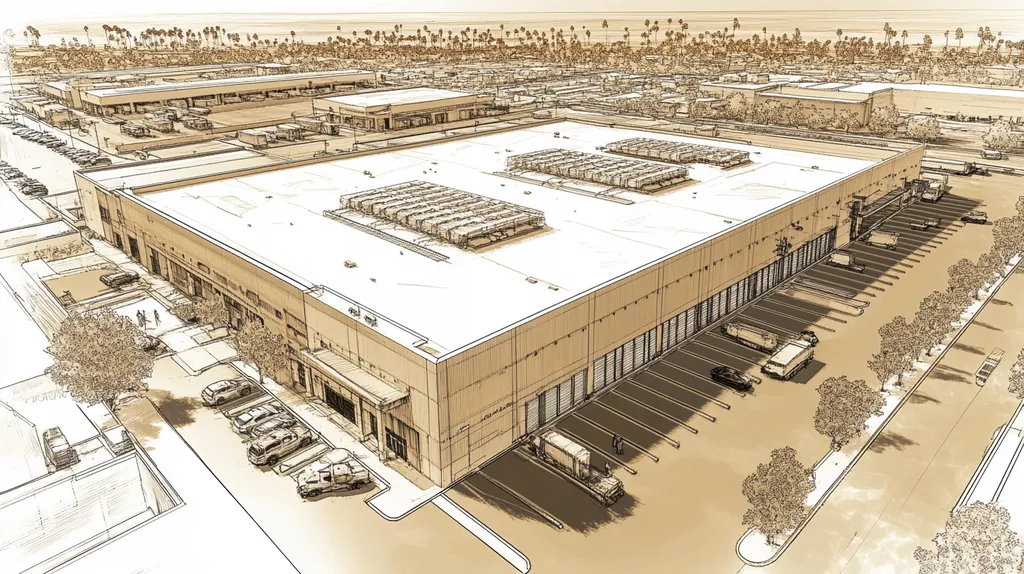In today’s commercial building landscape, an alarming 40% of roofs fail prematurely due to inadequate protection, leading to millions in preventable damage annually.
While many property managers view roof coatings as optional upgrades, these sophisticated systems have emerged as critical defenders against UV radiation, moisture infiltration, and thermal stress.
From extending roof lifespan to slashing energy costs, the strategic application of protective coatings transforms vulnerable roofing systems into resilient barriers—provided owners understand the key principles, proper applications, and potential pitfalls.
SECTION 1: THE BASICS EXPLAINED
In the fast-paced world of commercial buildings, roof coatings have emerged as a crucial defense strategy against premature aging. With statistics showing that more than 30% of commercial roofs fall victim to untimely failure due to environmental stressors, property owners and facility managers must understand how roof coatings can extend the life of their roofing systems. By preventing costly repairs and improving energy efficiency, these coatings are not just nice-to-haves; they’re vital for sound building management.
What It Is (In Plain Language)
Roof coating involves applying a protective layer over an existing roofing system. Crafted from diverse materials like acrylics, silicones, and polyurethanes, each type brings unique strengths to the table. Think of it as a superhero cape for your roof—shielding it from the villainous forces of UV rays, moisture, and wild temperature swings.
Many commercial property owners fall into the trap of viewing roof coatings as merely cosmetic enhancements. However, they are pivotal in bolstering the structural integrity of a roof. By sealing existing leaks and providing an extra layer of insulation, a quality roof coating can dramatically boost a building’s resilience.
Additionally, these coatings are lightweight and can often be applied with minimal disruption to daily operations. This means property managers can safeguard their roofs without derailing productivity or draining their budgets.
Ultimately, a well-applied roofing coating system simplifies future maintenance tasks and significantly extends roof life, making it a savvy investment for any commercial building.
Why It Matters (To Your Building)
The choice to utilize roof coatings can transform a building’s longevity and overall health. Well-coated roofs can slash energy costs by reflecting solar rays and keeping internal temperatures cooler. This energy efficiency can lead to substantial savings, particularly in larger facilities that boast extensive rooftop real estate.
On the flip side, roofs lacking protective coatings are prime targets for damage caused by harsh weather conditions, which may lead to leaks and other pricey repairs. Industry experts indicate that effective roof coatings can reduce routine maintenance by as much as 30%—a win for both budget and peace of mind.
Moreover, roofs treated with coatings tend to enjoy a longer lifespan, often stretching beyond 20 years. In contrast, uncoated roofs typically hit their performance peak around the 10-15 year mark. Therefore, investing in a coating is not simply a cost; it’s a strategic maneuver for long-term financial foresight.
With the potential to elevate a building’s energy performance and diminish operational costs, roof coatings have transcended being optional upgrades; they’ve become key players in the modern commercial roofing playbook.
How It Works
Roof coatings function by forming a seamless membrane across the roof surface, creating a formidable barrier against environmental threats. This membrane helps protect the underlying roofing materials from damage. Upon application, the coating fills in small cracks and holes, effectively sealing the roof’s surface.
The application process is generally straightforward: it consists of cleaning the roof and then applying the coating via sprays, rollers, or brushes. Once dry, the resulting layer is both waterproof and reflective, offering a seamless finish.
The reflective qualities of many coatings not only help keep a building cooler, but they also minimize thermal shock to the roofing materials. This reduction in temperature fluctuations can significantly lessen stress on the roof, which in turn reduces the risk of premature aging and failure.
Additionally, some advanced coatings are enhanced with additives that provide superior protection against mildew and algae growth. This quality not only preserves aesthetics but also further enhances the roof’s longevity. Thus, utilizing roof coatings can significantly boost a roof’s durability and performance, transforming it into a fortress against the elements.
SECTION 2: PRACTICAL APPLICATIONS
Roof coatings aren’t merely an option; they’re an essential safeguard for commercial buildings facing the unforgiving elements. Data highlights that uncoated roofs can suffer severe wear within just a few years, leading to costly leaks and structural damage. Investing in a high-quality roof coating can ultimately pay off by prolonging roof life and slashing energy expenses. This section explores the practical uses of roof coatings, the critical times for their application, and their interactions with other roofing systems.
Common Uses & Examples
Roof coatings find a multitude of applications that enhance a roof’s longevity and performance. Their primary role is to create a seamless, waterproof barrier that shields against rain, wind, and damaging UV radiation.
For example, elastomeric coatings excellently suit flat roofs, where water tends to accumulate and forge leaks. These coatings are designed to expand and contract with temperature shifts, ensuring they remain effective over time.
Reflective coatings significantly boost energy efficiency by bouncing sunlight away, thus keeping rooftop surfaces cooler and reducing heat absorption. This can translate to lower cooling bills, especially crucial in warmer climates.
Moreover, roof coatings are often utilized in restoration projects. By extending the life of existing systems, they stave off the need for complete replacements, yielding significant savings and minimizing waste.
When You Need It Most
Timing is everything when it comes to applying roof coatings. Facilities managers should prioritize coating application during routine inspections or right after severe weather events.
Roofs situated in extreme climates or high-precipitation areas may require coatings more frequently due to accelerated wear and tear. In these cases, protective coatings become both a shield and a necessity.
Additionally, roofs nearing the end of their typical lifespan can gain major benefits from coatings. This forward-thinking approach can postpone expensive replacements and safeguard structural integrity.
Signs of deterioration—like cracks, fading, or discoloration—should trigger an evaluation of potential coating options. Tackling these issues early on can help prevent more serious complications down the road.
Interactions With Other Systems
It’s crucial to understand how roof coatings interact with existing roofing systems to maximize their benefits. Different roofing materials often demand specific types of coatings for optimal performance.
For instance, metal roofs frequently benefit from acrylic coatings, which help mitigate rust, while single-ply membranes may necessitate unique formulations that adhere well without causing damage.
Coatings can also work hand-in-hand with other roofing technologies, such as insulation systems. Pairing enhanced insulation with reflective coatings can significantly bolster energy efficiency.
To ensure a successful application, property owners should consult with roofing professionals. Proper compatibility between coatings and existing materials is key; otherwise, issues like peeling or premature failure may arise.
SECTION 3: KEY TERMINOLOGY DECODED
Understanding key roofing terminology is a must for commercial property owners aiming to make smart, informed decisions. Misinterpreting roofing terms can lead to costly blunders, such as choosing the wrong type of coating or misjudging the needs of the roof. A revealing study shows that neglect or misunderstanding in roof maintenance can cut a roof’s lifespan in half. This section will clarify essential vocabulary, demystify industry jargon, and streamline measurement and units relevant to roof coatings.
Essential Terms Explained
Roof coatings are specialized products that enhance the protective qualities of existing roofing systems. When applied, these coatings create a seamless waterproof barrier, keeping leaks at bay while improving energy efficiency. One key term to know is “reflectivity,” which measures how well a coating reflects sunlight, a helpful feature for reducing cooling costs. A coating with a high reflectivity rating can transform a building by lowering internal temperatures, leading to substantial energy savings.
Another vital term is “substrate,” the underlying material that receives the coating. Substrates can vary from metal and asphalt to concrete, each requiring specific types of coatings for optimal performance. Understanding the substrate is crucial, as it significantly influences the adhesion and durability of the coating.
Next, we have “weathering,” the gradual degradation of a roof coating due to environmental factors over time. Recognizing how weathering affects your roof helps property owners grasp the impacts of UV rays, moisture, and other elements. Lastly, “elasticity” refers to a coating’s ability to stretch without cracking—an essential characteristic in areas subject to thermal expansion and contraction.
Industry Jargon Translated
Navigating the world of roof coatings can often feel like untangling a web of complex terminologies. For instance, “polyurethane” and “acrylic” are different types of polymer-based coatings, each boasting distinct advantages. Polyurethane coatings are lauded for their durability and are often the go-to choice for high-traffic areas, while acrylic options shine in UV resistance and ease of application.
Another common phrase is “repair and restoration.” While repair denotes fixing damaged sections, restoration encompasses efforts to extend the roof’s life—often through applying new coatings over existing materials. Grasping this difference can lead to savvy, cost-effective roofing strategies.
Words like “application rate” are also critical. This term represents the amount of coating needed per square foot. A precise measurement can drastically influence budget estimates; miscalculation could result in undercoating and inadequate protection.
Measurement & Units Simplified
Measurements in roofing can seem intimidating at first glance. The most commonly utilized unit is square footage, but roofs are often measured in squares—one square equals 100 square feet. This unit simplifies both material orders and installation cost estimates.
When discussing thickness, terms like “mils” and “dry film thickness” often pop up. A mil measures one-thousandth of an inch, crucial for deciding how much coating to apply. For most commercial uses, a recommended thickness of 15-20 mils suffices.
Lastly, “permeance” describes the moisture-vapor transmission rate of a roofing material, measured in perms. Knowing the permeance of a coating can prevent harmful moisture buildup that could damage the roof. Familiarity with these measurements ensures informed product choices and proper application strategies.
SECTION 4: DECISION FACTORS
Property owners and facility managers must act quickly when considering roof coatings, as delays can lead to significant damage and costly repairs. These coatings provide essential protection against severe weather, UV rays, and general wear and tear, yet several decision factors need careful consideration. Understanding cost, performance, and durability will inform a smart investment that pays off over the long haul.
Cost Considerations
The initial price of roof coatings can fluctuate widely, depending on materials and application techniques. While some options might look appealing due to lower upfront costs, premium-quality coatings often defend against substantial damage, leading to savings in the long run. For instance, while reflective coatings may demand a higher initial investment, they can dramatically reduce cooling expenses—providing a return that regular maintenance simply can’t offer.
Moreover, getting the application right is paramount. Cutting corners on labor might yield a substandard installation, increasing long-term costs through premature failures. Though an experienced contractor may charge more upfront, their expertise ensures that the coating delivers its intended lifespan and efficiency.
It’s also worth noting that some coatings necessitate specific preparatory steps to ensure proper attachment to existing materials, which can drive up initial costs. Yet, overlooking these preparatory measures may lead to costly reapplications down the line.
In essence, while upfront costs can be misleading, evaluating the total cost of ownership across the roof’s lifespan sheds light on its true value.
Performance Trade-offs
Diverse roof coatings bring varying performance capabilities to the table, directly affecting their utility in safeguarding buildings. Some excel at reflecting sunlight to keep cooling costs lower, while others prioritize sealing minor leaks or enhancing waterproofing. Grasping the specific environmental conditions your building faces is crucial for selecting the right coating.
Durability is another key player in performance. Coatings designed for light foot traffic might falter under heavy maintenance or foot traffic, leading to quicker deterioration. This mismatch can encourage more frequent touch-ups, which ultimately inflates costs.
Additionally, compatibility with existing substrates is vital; improper matches can lead to adhesion failures. Consulting with industry professionals ensures that property managers choose coatings that fit each unique roofing material, aligning performance needs with building requirements.
Each performance factor must resonate with the specific demands of the commercial building, maximizing both its protection and efficiency.
Lifespan & Durability Factors
The lifespan of roof coatings varies, ranging from just a few years to over two decades, significantly influencing overall return on investment. Although more durable coatings typically come at a higher price, they can ultimately save property owners money by prolonging roof life. Coatings like silicone or polyurea may offer up to 20 years of protection, particularly valuable in high-stakes scenarios.
However, environmental conditions play a role in coating longevity. Buildings situated in extreme climates or areas with intense UV exposure might require specialized products engineered for enhanced resilience. Understanding local climate issues is crucial for selecting an optimal coating that ensures lasting protection.
Moreover, regular maintenance and inspections can dramatically impact coating durability. Overlooked routine checks might lead to unnoticed wear and tear, escalating issues that could result in the early need for recoating or repairs, adding unnecessary expenses.
Ultimately, choosing a coating with a strong track record, while considering environmental challenges and committing to regular maintenance, can significantly extend service life and boost overall value.
SECTION 5: COMMON CHALLENGES
While the benefits of roof coatings on commercial buildings are significant, they come hand-in-hand with challenges that can trip up even the most seasoned property managers. Shockingly, around 70% of roof failures stem from improper maintenance and installation. Recognizing and addressing potential pitfalls promptly is essential for avoiding costly repairs and maximizing the lifespan of roofing systems.
Frequent Problems & Solutions
A recurring issue with roof coatings is poor adhesion, which commonly occurs when the roof has not been adequately prepared. Skimping on proper cleaning—like failing to remove dirt, oils, or old materials—can lead to coatings that simply won’t stick. To prevent this, ensure surfaces are pressure washed thoroughly before application for optimal adhesion.
Another common antagonist is UV damage, which can make coatings brittle and prone to cracking over time. To defend against this, select high-quality, UV-resistant materials from reputable manufacturers. Regular maintenance inspections can also catch early signs of wear, allowing for timely interventions before problems escalate.
In addition, applying an improper thickness of coating can create problematic pools that turn into leaks. Always adhere to the manufacturer’s specifications for thickness during application, and conduct a thorough inspection afterward to ensure adequate coverage.
Environmental factors like extreme temperatures or high humidity can further complicate coating performance. Timing the application to coincide with favorable weather conditions plays a crucial role in the success of the installation process.
Warning Signs To Watch For
Property owners need to stay alert for warning signs that signal coating failure. Flaking or peeling coatings are immediate red flags, indicating poor adhesion that could allow moisture intrusion. Acting quickly can prevent more extensive water damage.
Aesthetically, discoloration or changes in surface texture can hint at underlying issues that demand attention. Additionally, bubbles or blisters forming in the coating often point to trapped moisture that can degrade the coating’s integrity over time.
Pooling water after rain is another warning sign of insufficient drainage, which can lead to leaks and structural damage down the line. Ensuring proper drainage systems are implemented during the application is vital for safeguarding the roof’s longevity.
Lastly, any visible damage, such as punctures or tears, requires immediate action. Addressing these issues promptly can help prevent extensive repairs later.
Preventative Approaches
Taking a proactive stance on maintenance is essential for prolonging the life of a coated roof. Schedule regular inspections at least twice a year to catch problems early and minimize repair costs. A professional roofing contractor can help conduct thorough evaluations to ensure nothing goes unnoticed.
Cleaning the roof prior to application is critical as well. A clean surface ensures better adhesion and performance of the coating over time. Implementing a routine cleaning schedule can dramatically extend the life of your roof coating.
Investing in high-quality materials specifically designed for your building’s climate can significantly enhance performance and durability. This smart choice can prevent many common issues before they arise.
Lastly, fostering a culture of care through employee training on the importance of roof maintenance can be beneficial. Educating teams about warning signs of coating deterioration empowers facility managers to act swiftly, ultimately ensuring timely upkeep and safeguarding against costly failures.
SECTION 6: NEXT STEPS & RESOURCES
Deciding to coat a commercial roof is a significant move that promises both protection and longevity. With the flood of options available, property managers must navigate this landscape skillfully to ensure their investments pay off. Knowing the right questions to pose to roofing contractors, adhering to industry standards, and uncovering valuable resources can make all the difference. This section arms property owners with actionable insights to enhance their roof coating decision-making process.
Questions To Ask Providers
When exploring roof coating options, property managers should come prepared with a strategic list of questions for potential contractors. Start by delving into the specifics of the coating products they recommend. Don’t hesitate to ask about their durability, warranty coverage, and installation techniques.
It’s also wise to inquire about the contractor’s experience with similar projects, including the types of roofing systems they’ve worked on and their track record of successful applications. Be sure to discuss compliance with local building codes, as this ensures a smoother installation process without future hitches.
Ask about maintenance services after installation, as ongoing care is key to maximizing the coating’s lifespan. Proactive maintenance can save a world of trouble down the line.
Lastly, request examples of previous work or customer references; these provide crucial insights into the provider’s reliability and quality of service.
Industry Standards & Guidelines
Sticking to industry standards is paramount for the success of roof coating projects. The National Roofing Contractors Association (NRCA) offers guidelines that can help property owners guarantee high-quality installations. These guidelines cover everything from surface preparation to specific application techniques and materials.
Equally important is familiarity with local building codes to ensure compliance, which is vital for the roof’s long-term performance. Industry certifications like ENERGY STAR or Cool Roof Rating Council can also indicate that a roof coating meets robust performance benchmarks.
By adhering to these established standards, property managers can mitigate the risks associated with improper installation, reducing the likelihood of premature failures while extending the overall lifespan of the roof.
Consider tapping into resources provided by industry associations. They frequently offer updates on best practices as well as emerging technologies in roof coatings to keep managers in the know.
Further Learning Simplified
For property owners eager to deepen their understanding of roof coatings, a wealth of resources awaits. Online courses and webinars hosted by roofing associations present targeted learning opportunities, covering the benefits and installation processes of roof coatings in detail.
Dive into technical publications and white papers that spotlight case studies; these documents often reveal practical insights and tangible outcomes from various roof coating systems.
Networking with fellow professionals can provide additional knowledge. Joining local or national roofing organizations facilitates the sharing of experiences and recommendations regarding reputable contractors.
Finally, subscribing to industry newsletters ensures that property managers stay informed about the latest innovations and developments in roofing technologies. A knowledgeable property owner is a confident decision-maker.
The Bottom Line
With 40% of commercial roofs failing prematurely, protective coatings have evolved from optional upgrades to essential safeguards for modern buildings.
The data speaks volumes: properly coated roofs can extend lifespans by up to 20 years while slashing energy costs by 30% or more.
From reflective coatings that combat rising cooling expenses to elastomeric solutions that prevent water infiltration, these sophisticated systems offer a proven defense against the elements.
The stakes are clear – neglecting proper roof coating can lead to catastrophic failures, while strategic implementation transforms vulnerable surfaces into resilient barriers.
For forward-thinking property managers, the question isn’t whether to coat, but rather which advanced solution best suits their specific needs.
FREQUENTLY ASKED QUESTIONS
Q. What is a commercial roof coating?
A. A commercial roof coating is a protective layer applied over existing roofing systems. It enhances durability and helps prevent leaks, ultimately saving property owners from expensive repairs. Think of it as a nifty shield ensuring your roof can withstand the elements.
Q. When should I apply roof coating on my industrial roof?
A. Roof coating should ideally be applied during regular inspections, especially after severe weather. If your roof shows signs of wear and tear, like cracking or pooling water, it’s high time for some protective armor. Think of it as an annual check-up for your roof’s health!
Q. What are common mistakes in commercial roof coating?
A. Common pitfalls include poor surface preparation and applying incorrect thickness. If you skimp on cleaning or rush the process, you could end up with adhesion issues and premature failures. Proper prep is essential—like giving your roof a spa day before the big reveal!
Q. How long does a roof coating last on a commercial roof?
A. The lifespan of a roof coating can typically range from 5 to 20 years. It largely depends on the coating type and environmental conditions. Regular maintenance and inspections can extend that life, kind of like keeping your car in top condition for longer journeys.
Q. What maintenance is needed for an industrial roof coating?
A. Routine inspections should focus on cleaning and identifying issues like cracks or discoloration. Scheduling inspections at least twice a year and promptly addressing problems can prevent significant repairs later. Treat your roof like you would a garden—regular care leads to a flourishing result!
Q. What are the benefits of using reflective coatings on commercial roofs?
A. Reflective coatings can significantly reduce cooling costs by bouncing sunlight away and lowering roof temperatures. This means energy savings for your facility, especially in warmer climates. It’s like putting sunglasses on your roof—keeping it cool, collected, and stylish!
Q. How does environmental climate affect roof coatings?
A. Environmental factors like UV exposure, humidity, and temperature swings can all impact coating longevity. Coatings designed for specific climates tend to perform better, ensuring your roof can handle whatever Mother Nature throws its way. Choosing wisely can armor your building for years to come!

